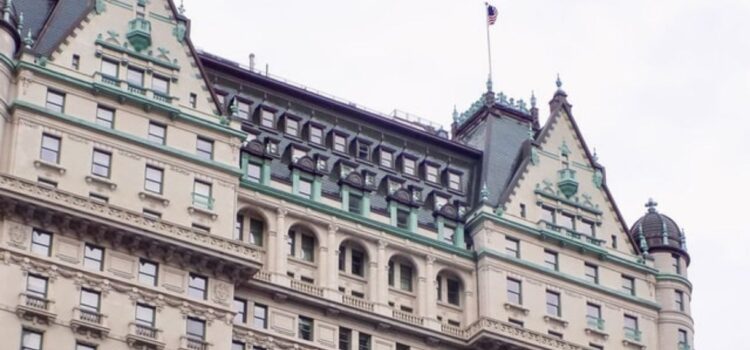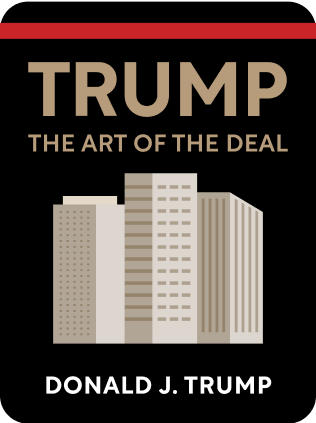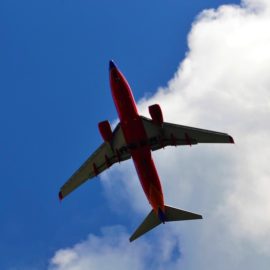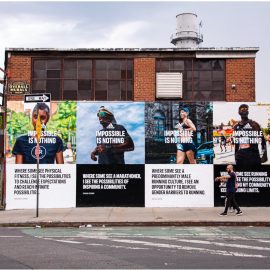

This article is an excerpt from the Shortform book guide to "The Art of the Deal" by Donald J. Trump. Shortform has the world's best summaries and analyses of books you should be reading.
Like this article? Sign up for a free trial here .
What was Donald Trump’s Commodore Hotel project? How long did it take to complete and make it a success?
Trump bought the Commodore Hotel in 1976 and reopened it as the Grand Hyatt in 1980. As Trump envisioned, the venture became an overnight success, turning millions in annual profits almost immediately.
Read about Trump’s Commodore Hotel project.
Trump’s Commodore Hotel
Trump bought the Commodore Hotel in partnership with the Grand Hyatt. The building and the area around it were dilapidated, but it was located next to the Grand Central Station. Trump was convinced that if he could give the hotel a facelift, its prime location would ensure success.
At the same time, the hotel’s location next to Grand Central Station assured Trump that the value would only rise. A steady stream of professionals passed by the hotel every day, creating plenty of opportunities for business.
Despite the premium location of the Commodore Hotel, Trump recognized that the project carried a lot of risk with the city still on the verge of bankruptcy. If he fell short, he could lose a lot of time, money, and credibility within the real estate community.
Trump’s deal with Penn Central gave him an exclusive purchase option contingent on him paying $250,000 and securing financing, a hotel operator, and an unprecedented tax abatement from the city.
It was a tricky situation: He needed the hotel partner and a guaranteed tax abatement in order to convince the banks to finance. He needed all three to get the deal. But without the deal, it’d be difficult to convince a hotel operator to come on board.
In the meantime, he didn’t want to lose the deal but also didn’t want to risk losing $250,000 before he knew he could get all the pieces together. He stalled on the payment while he worked on getting everything in place.
Appearances Matter
Trump needed a proposal that would inspire confidence among the banks and the city, so the first thing he did was work with an architect to create a design.
Trump felt that the Commodore’s dark, outdated appearance was hurting its potential. He wanted to make the building look contemporary by covering the brick exterior with either bronze or glass.
When he and the architect had settled on the design, Trump told the architect to make the drawings look more expensive than they were. With his proposals as with his buildings, Trump is convinced that an impressive presentation makes an invaluable impression.
Trump Chose a Hotel Operator
While looking for a hotel partner to run the Commodore Hotel, Trump considered what would give him the best chance of success given the kind of business and clientele he envisioned:
- An established hotel operator could handle the large 1,400-room hotel.
- A national hotel chain had the benefits of being well known, having a proven track record of successful management, and having a large reservation system.
- The company had to have a prestigious enough reputation (Ramada Inn and Holiday Inns didn’t cut it).
Trump leaned toward Hyatt, first because its hotels fit the modern, polished design he envisioned for the Commodore Hotel. Trump made a deal with Hyatt to buy, renovate, and operate the Commodore with him—contingent on getting financing and the tax abatement.
Trump Pitched the Project as an Economic Boost
Trump used the city’s poor economic condition as leverage on several fronts:
- He convinced Palmieri that no other developer would risk buying such a run-down hotel in a dilapidated neighborhood with the city’s economic struggles.
- He pushed the banks by saying it was their moral obligation to help the city by financing a project that would create jobs and improve the surrounding neighborhood.
- He told the city that granting the tax abatement would allow him to move forward on the project, which would create thousands of jobs and provide a boost to the area.
Although Trump hadn’t yet secured financing when he approached the city—in fact, he needed the tax abatement in order to get financing—he asked for an unprecedented abatement. His logic was that even if they offered less it’d still be enough.
The city was eager for development, and Trump emphasized that the Commodore’s renovation and success were essential to kickstarting revitalization in the Grand Central neighborhood. He agreed on a tentative deal and waited for the Board of Estimate to give final approval.
Trump wanted to tip the scales in his favor, so a week before the Board of Estimate’s decision, he encouraged Palmieri to go public with the Commodore’s financial struggles. Palmieri announced that the Commodore had lost money that year and its losses were projected to be even worse the following year, so the hotel would soon be permanently closed.
Adding to the pressure, newspapers ran stories about how the Commodore’s closing was pushing tenants out, putting hundreds of employees out of work, and hurting neighboring businesses.
Despite opposition and a competing bid, the Board of Estimate ultimately approved the 40-year tax abatement by unanimous decision.
Trump Ensured Long-Term Security
The tax abatement helped Trump secure financing, and the project was soon underway. But as Trump closed the deal with the bank, he saw an opportunity to build in more long-term security for himself: He included an exclusive covenant, a clause that required Trump’s permission for Hyatt to build any competing hotels in New York City.
Trump knew Hyatt would be against this clause, so when he was alone with the bank executive he underscored that the bank was making a big investment, and it could be jeopardized if Hyatt quickly put up another hotel nearby. The bank executive then demanded that Hyatt include the clause and gave the company an hour deadline to agree.
The head of Hyatt was out of the country, so while Hyatt’s representatives tried to reach him for approval, Trump took it upon himself to draft the clause. By the end of the hour, the Hyatt executives had signed the clause, and now Trump and his heirs own the right to approve or deny construction of any future Hyatts in New York City.
The Commodore reopened as the Grand Hyatt in September 1980 and immediately turned millions of dollars in annual profits. The economy turned around soon after, and room prices skyrocketed.

———End of Preview———
Like what you just read? Read the rest of the world's best book summary and analysis of Donald J. Trump's "The Art of the Deal" at Shortform .
Here's what you'll find in our full The Art of the Deal summary :
- What Donald Trump says about his early life before the White House
- The 11 principles Trump says guided his business decisions
- How the West Side rail yards project proved to be a challenge for Trump






